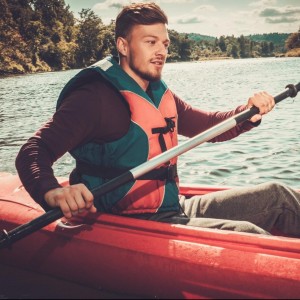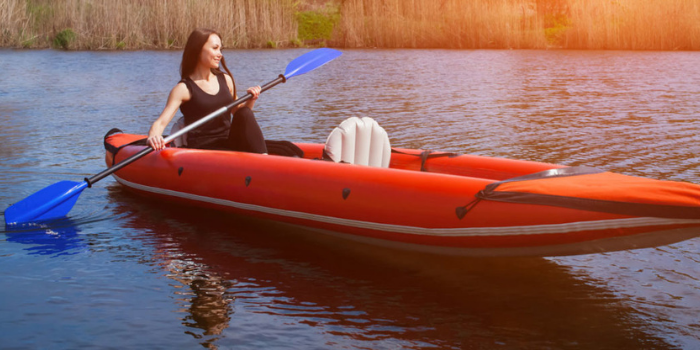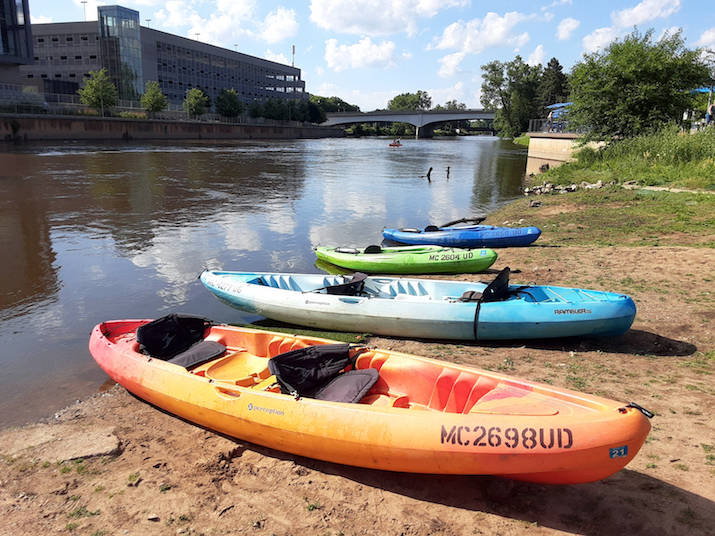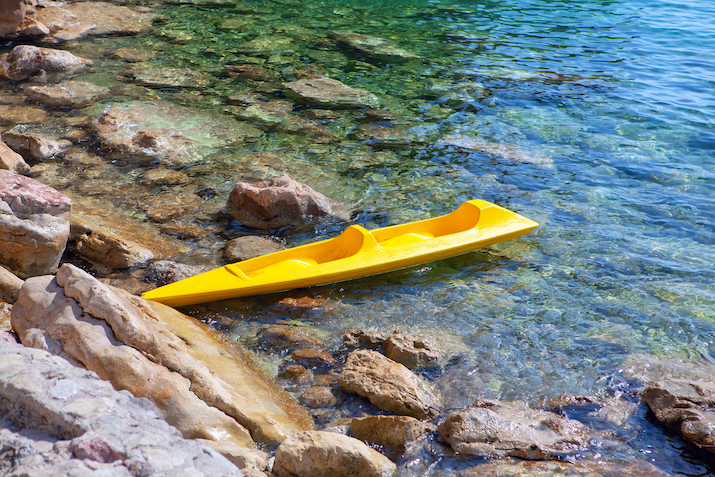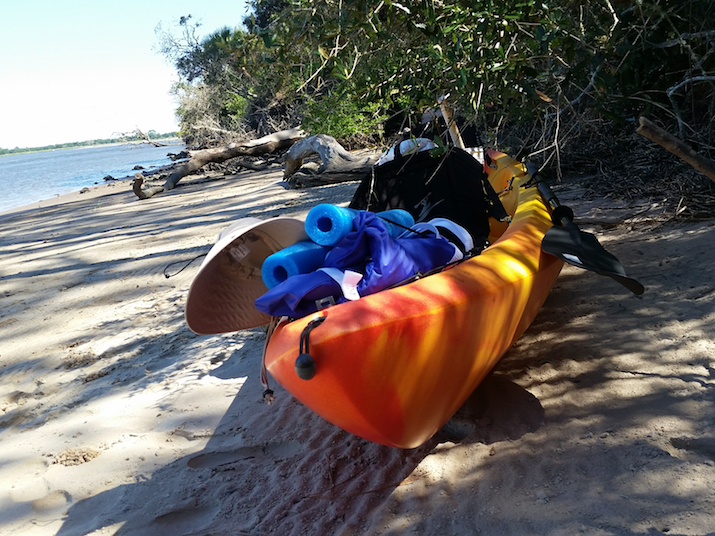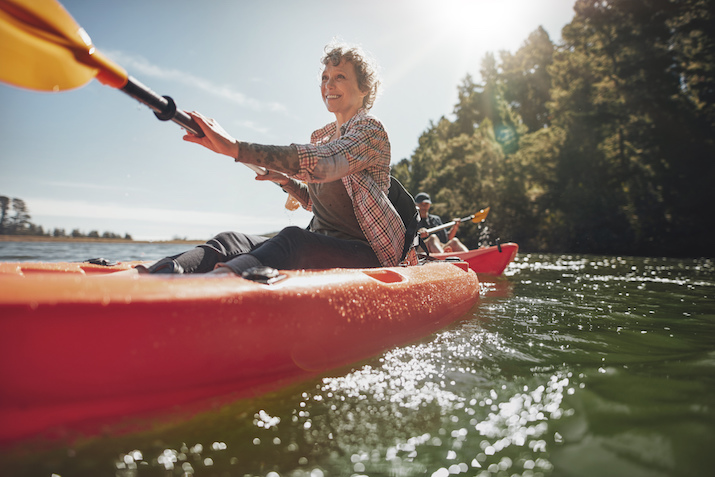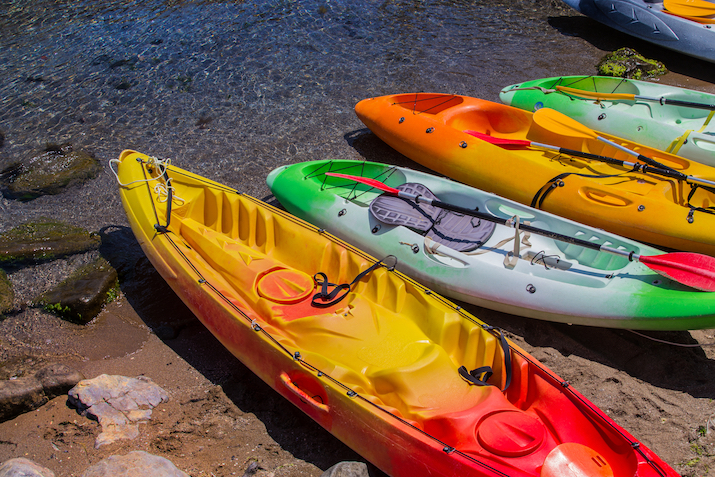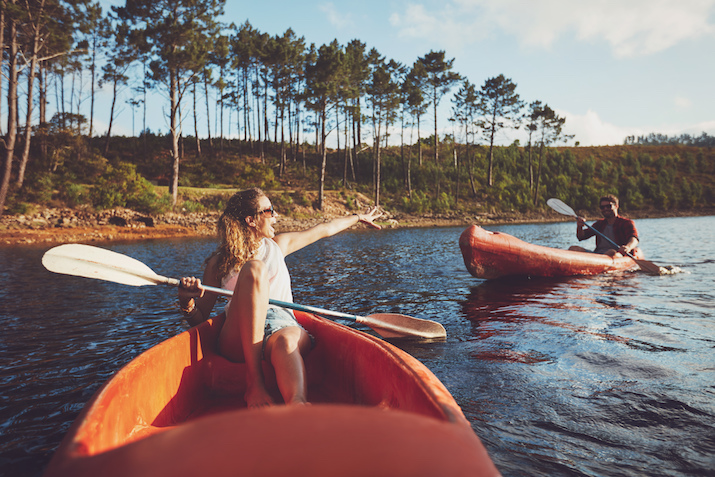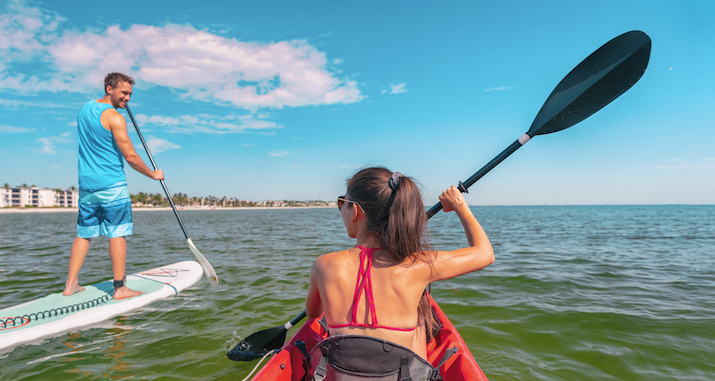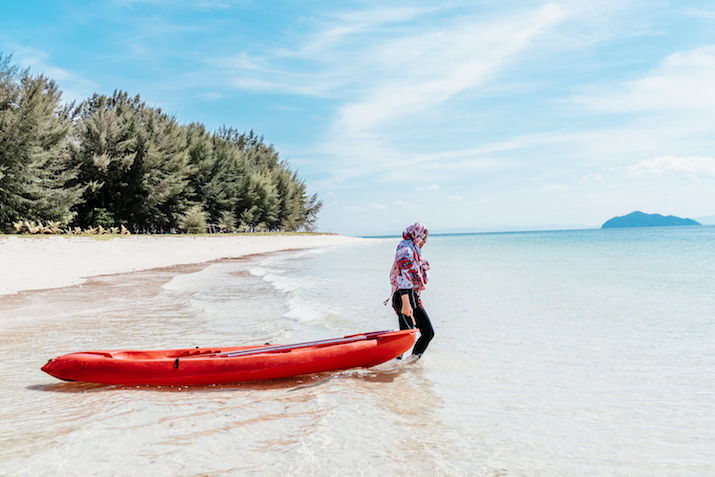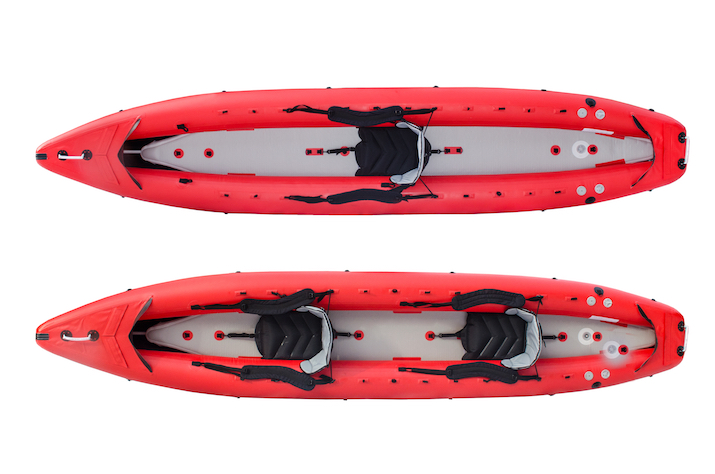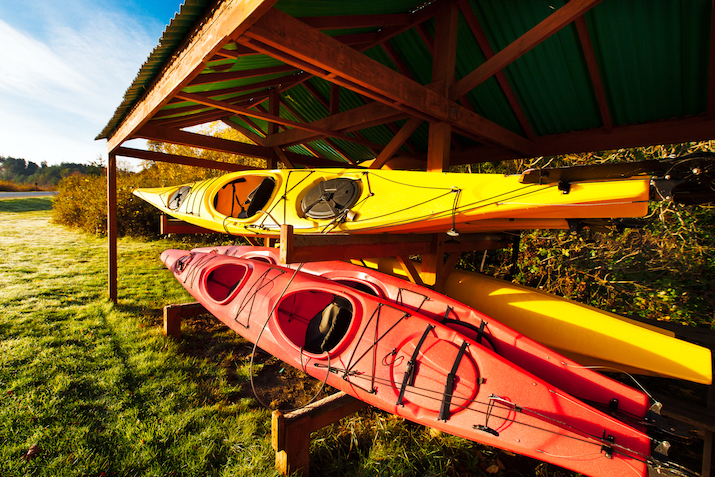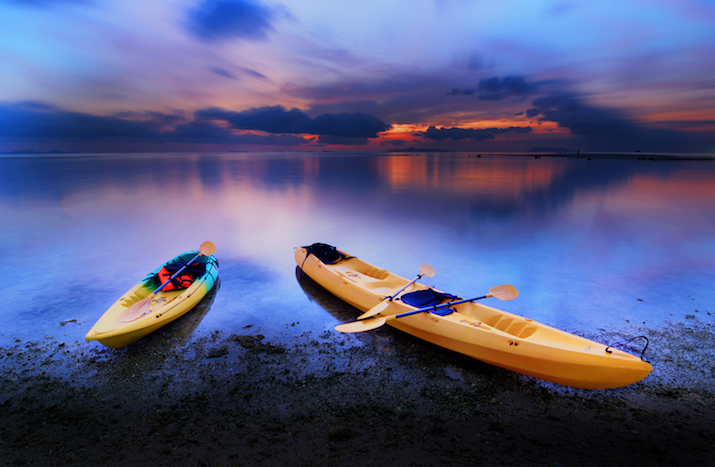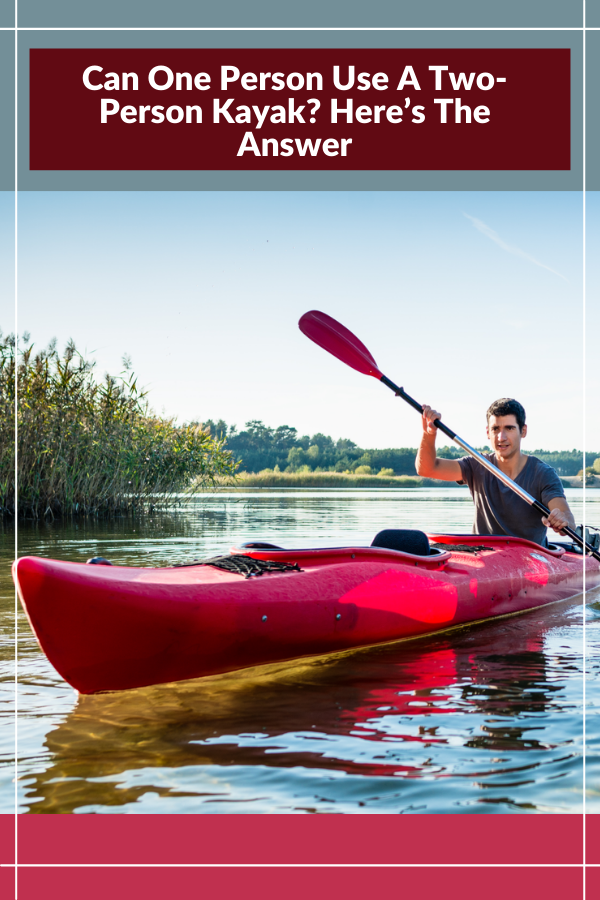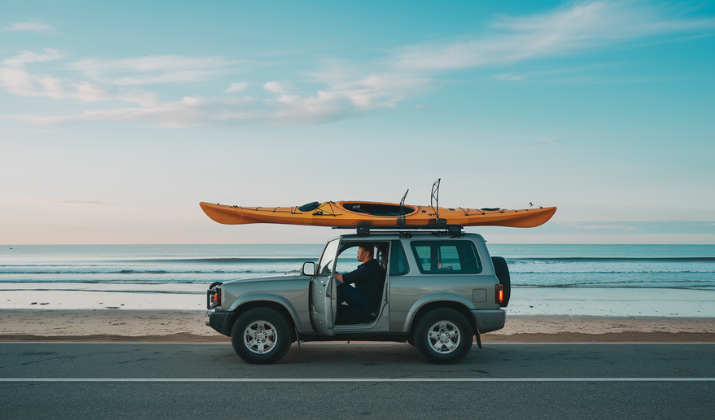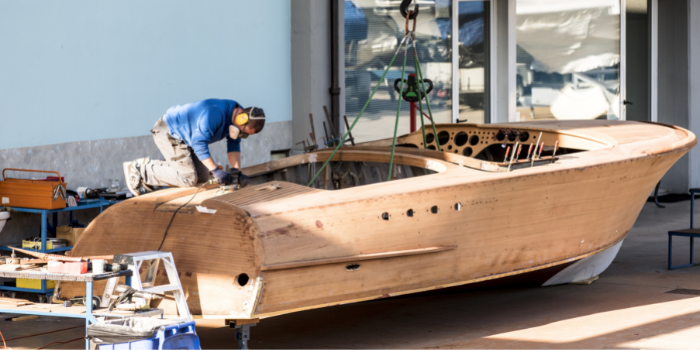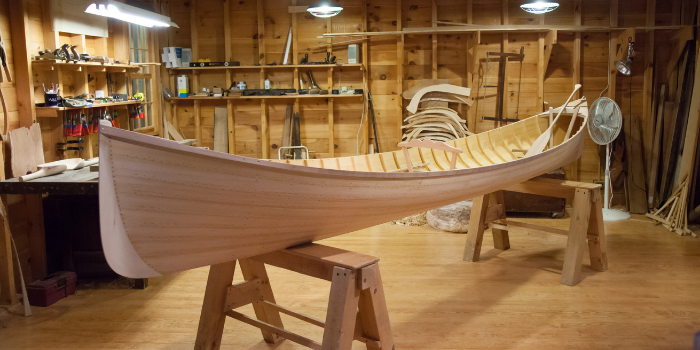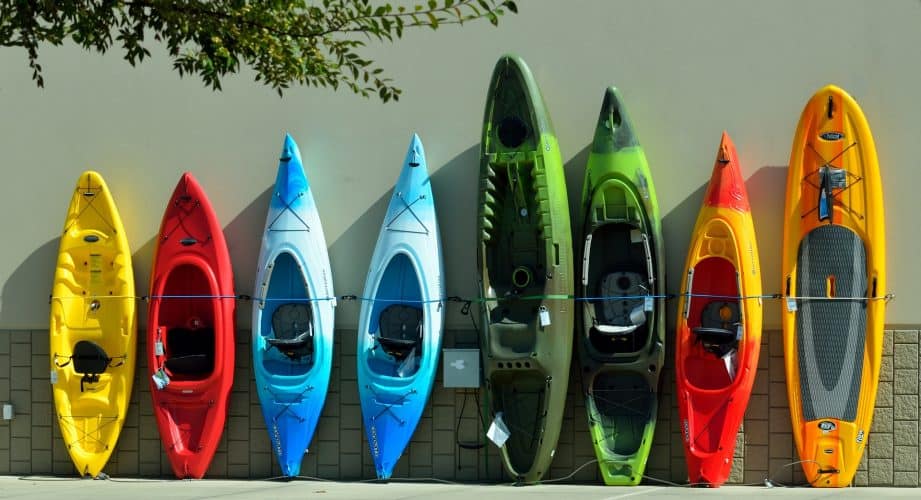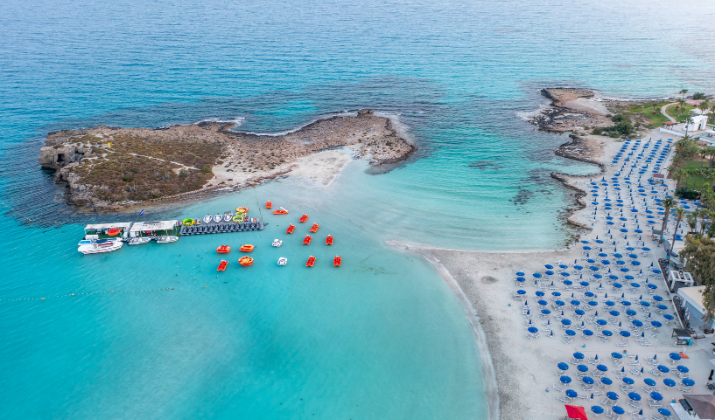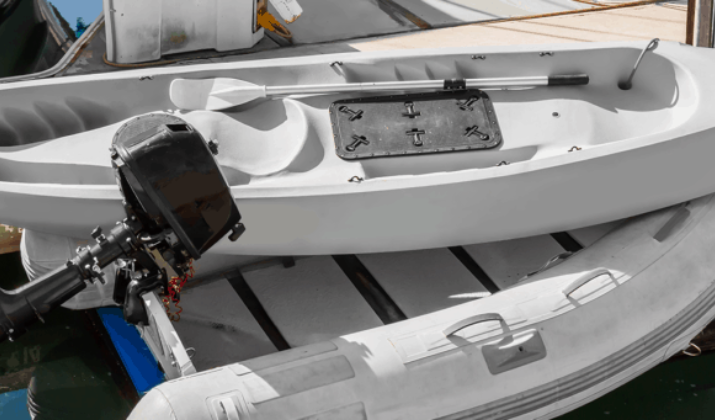If you and your partner have one of the best tandem kayaks for your joint paddle adventures, you probably love it. Unfortunately, it may not always be possible to convince your partner to join you when you are itching for some time on the water.
That begs the question: can one person use a two-person kayak? Fortunately for you, we are going to dedicate this guide to providing the answer to that very question.
Plus, we will also provide some suggestions to make paddling a tandem kayak as a single paddler more comfortable. It isn’t exactly rocket science, but if you are new to the idea we have a few helpful suggestions.
Photo by T-I via Shutterstock
Can One Person Use A Two-Person Kayak?
Photo by RussieseO via Shutterstock
The answer is that it really depends on the style of kayak that you are working with. Obviously, if you have a kayak like the one that is pictured above, it is going to be a little difficult to paddle by yourself.
The best style of tandem kayak for one person is a sit-on-top with removable and adjustable seats.
It is definitely possible to paddle a sit-inside tandem kayak or one with molded-in seats by yourself, but you will have to pick whether you feel more comfortable sitting in the front or back seat.
If you sit in the back, the bow of your kayak will be raised up out of the water, which will make it inefficient and difficult to steer. If you sit in the front, steering will also be an issue but the nose of the kayak will also be more likely to dip under the water if you encounter any waves.
Fortunately, there are plenty of great sit-on-top kayaks that offer clip-in kayak seats. These seats are more easily moved around so that you can set up the kayak for a single paddler or a set of partners.
In addition, many tandem kayaks have an optional third seat located between the two traditional seats. If you are paddling with your partner, this seat is great for a small child, furry paddle companion, or extra gear storage.
If you need to paddle by yourself, however, you can easily clip a seat into this central position and you will have better control of the longer kayak.
Tandem kayaks can also be a great option for larger paddlers if you can’t quite find a single kayak with enough weight capacity to adequately support you and your kayaking gear.
Also Read: Tandem Kayak vs Canoe
Benefits of One Person Paddling A Two-Person Kayak
There are actually several reasons why you might want to paddle a tandem kayak as a single paddler. So let’s look at some of the benefits of doing so before we move any further along.
More Storage Space
Photo by HMHahn via Shutterstock
If you set up your kayak seat in the center of a tandem, you will have a lot more room towards the bow and stern for storage. For this reason, some multi-day kayakers will intentionally choose a larger, two-person kayak for their overnight adventures.
The only caveat with this benefit is that you may need to get a little creative when it comes to your methods for strapping gear to your kayak because you will be storing it in slightly unconventional locations that are usually just meant for human riders.
Added Stability
Photo by Jacob Lund via Shutterstock
Every kayak has a maximum weight capacity that is set by its manufacturer. In many cases, however, it is recommended that you avoid exceeding 70-80 percent of the manufacturer’s advertised weight capacity.
While the kayak might not sink in a matter of seconds if you exceed its weight capacity, it will be much more likely to take on water and much harder to maneuver. It will also be much slower and less responsive to your paddle strokes.
More Legroom
Photo by Mikbiz via Shutterstock
Taller paddlers can have trouble with all types of kayaks, if we are being honest. Whether it means scrunching your feet up on the sides of your partner’s seat in a tandem kayak or just trying to fit in the cockpit of a sit-inside single kayak, the struggle can be real if you are much taller than 6’5″.
Taller paddlers can really benefit from choosing a tandem kayak and converting it for solo use. Sit-on-top styles are usually best for this purpose because they provide the most legroom possible.
Disadvantages of Paddling A Two-Person Kayak By Yourself
Just like most things in life, there are pros and cons of paddling a two-person kayak by yourself. So let’s quickly cover some of the disadvantages before we move on.
Less Maneuverability
Photo by Jacob Lund via Shutterstock
The first clear disadvantage to paddling a kayak that is slightly oversized for you is that it will be harder to maneuver. This means it will be more difficult to make quick turns or minor adjustments as the conditions dictate.
If you are mostly paddling on calm lakes or slow-moving rivers, this will be less of an issue. For those that are interested in paddling on moving water or fishing in narrower creeks and streams, however, this lack of maneuverability will be a serious issue.
Harder to Maintain Speed
Photo by Maridav via Shutterstock
You will also find that it will be harder for you to keep up with the other members of your group if you are the only single person trying to paddle a two-person kayak. After all, these kayaks are designed to be powered by two paddlers sitting in their strategic locations in the cockpit.
When you are learning how to kayak alone, you will quickly become aware of how the angle of your paddle shaft (relative to the surface of the water) impacts the amount of force you can exert with each stroke.
A higher paddle angle (i.e. closer to perpendicular to the surface of the water) will allow you to generate more power. A lower paddle angle (i.e. closer to parallel with the surface of the water) is generally used for casual touring when maximizing the power of each stroke is not as necessary.
The reason we bring this up is that paddling a two-person kayak by yourself often requires you to sit at the widest part of the kayak as opposed to the slightly narrower places you would be sitting either towards the bow or stern if you were paddling with a partner.
This will make it slightly more difficult to achieve a higher paddle angle because you may find yourself reaching out over the gunwales to adapt your paddlestroke. At the end of the day, this makes it harder to maintain your speed when paddling a tandem kayak solo.
Heavier to Transport
Photo by Sumstudio via Shutterstock
Perhaps the largest drawback to paddling a larger kayak by yourself is that it will be heavier to transport to and from the water’s edge. If you are one of the lucky ones that store your kayak at a beachfront property, this obviously won’t be an issue.
For the rest of you, you probably rely on your paddle partner to carry your kayak from your vehicle down the shore. If your partner can’t join you, transporting a tandem kayak by yourself is going to be difficult unless you have one of the best kayak carts, wheels, or trolleys.
Of course, just how difficult it will be will depend on your setup and the type of kayak you choose. Inflatable kayaks are often the lightest options on the market and even the tandems can be lighter than some of the best fishing kayaks for single paddlers out there.
It will also depend on how you strap your kayak to your vehicle to get it to your launching location. Transporting heavier kayaks is most easily done by using a kayak trailer instead of having to lift them on and off of your roof rack.
How To Set Up A Tandem Kayak For A Single Paddler
Photo by OlgaUA via Shutterstock
If you get one of the best inflatable kayaks for two or three people, the process of setting it up for a single paddler will be quite simple. As you can see from the photo above, you should be able to remove one seat and relocate the second towards the center of the cockpit.
The process is largely the same for a rigid, sit-on-top kayak as long as it has the optional third seat at the center. You will simply need to use the central anchor points on the gunwales to set up your seat in the center of your kayak’s cockpit.
What If You Have A Sit-Inside Kayak?
Photo by cdrin via Shutterstock
If you want to paddle a two-person sit-inside kayak by yourself, it is always going to be more comfortable for you to sit in the rear seat. That will give you the most control of the kayak’s direction.
This is especially true if your kayak is equipped with a rudder or skeg because the rear cockpit is where the controls will be.
The problem with this approach is that the front of your kayak can raise up out of the water and make it hard to paddle efficiently. So what you will want to do is put some of your kayaking gear in a dry bag in the front cockpit.
You can really use any sort of weight to help keep the bow of your kayak down. As an added bonus, you may also consider setting up your well-behaved dog in the front cockpit to make your paddles more efficient.
Best Tandem Kayaks For Single Paddlers
1. Ocean Kayak Malibu Two
Back in my guiding days, this was always our go-to tandem kayak for larger paddlers. It can easily be set up for a single paddler with the optional third seat at the center.
It also has a wide design (34 inches across) and plenty of molded-in footrests to allow paddlers of varying heights to find a comfortable position. This kayak offers a maximum weight capacity of 425 pounds and measures 12 feet in length.
While it doesn’t have a ton of storage space, straps at the bow and stern do provide tie-down points for your gear. That being said, this kayak is best for short, recreational paddles on calm lakes, slow-moving rivers, or even protected coastal waterways.
2. Intex Excursion Pro
This is one of the best (and most affordable) tandem inflatable kayaks out there. The seats are inflatable and can easily be adjusted for one or two paddlers.
This is one of the few inflatables out there that also comes with footrests built into the cockpit floor. This will help you maintain a more ergonomic and efficient paddling position instead of having your legs flat on the floor of your kayak for the duration of your paddle.
It is also a great option for couples that like recreational paddling if one of you is also interested in kayak fishing. It comes with multiple fishing rod holders and a removable (and adjustable) mounting bracket for attaching your preferred kayak fishing accessories.
3. Advanced Elements AdvancedFrame Convertible Elite Touring Kayak
This kayak is a great option for single or tandem kayak touring. Its 15-foot length means that it will give you plenty of room for storing all of your kayak camping gear and will also paddle quite efficiently over long distances.
It features a unique aluminum rib frame design that makes it more rigid than most other inflatable kayaks. In combination with multiple air chambers and strategically placed rigid panels, it is one of the highest-performing inflatables you will find.
In its construction, it boasts three layers of heavy-duty PVC tarpaulin material for added puncture and tear resistance. Plus, it is one of the few inflatables with a coaming around the edge of the cockpit that allows you to attach one of the best kayak spray skirts for cold weather paddling.
Final Thoughts
Photo by ARZTSAMUI via Shutterstock
At the end of the day, the final answer to this pressing question is a definite yes. It may take a little more effort and be a little less comfortable than paddling one of the best single sit-on-top kayaks, but it is definitely better than buying a whole new kayak.
Paddling a tandem kayak as a solo paddler also comes with those important benefits and can actually be a great option for larger paddlers. So certain people may be better off paddling a tandem kayak solo than they would be paddling a smaller single kayak.
If you find that this is the case for you (or you simply pull the short straw and wind up paddling a tandem kayak by yourself on your next family outing), we hope that you can use these tips to do so more comfortably!

